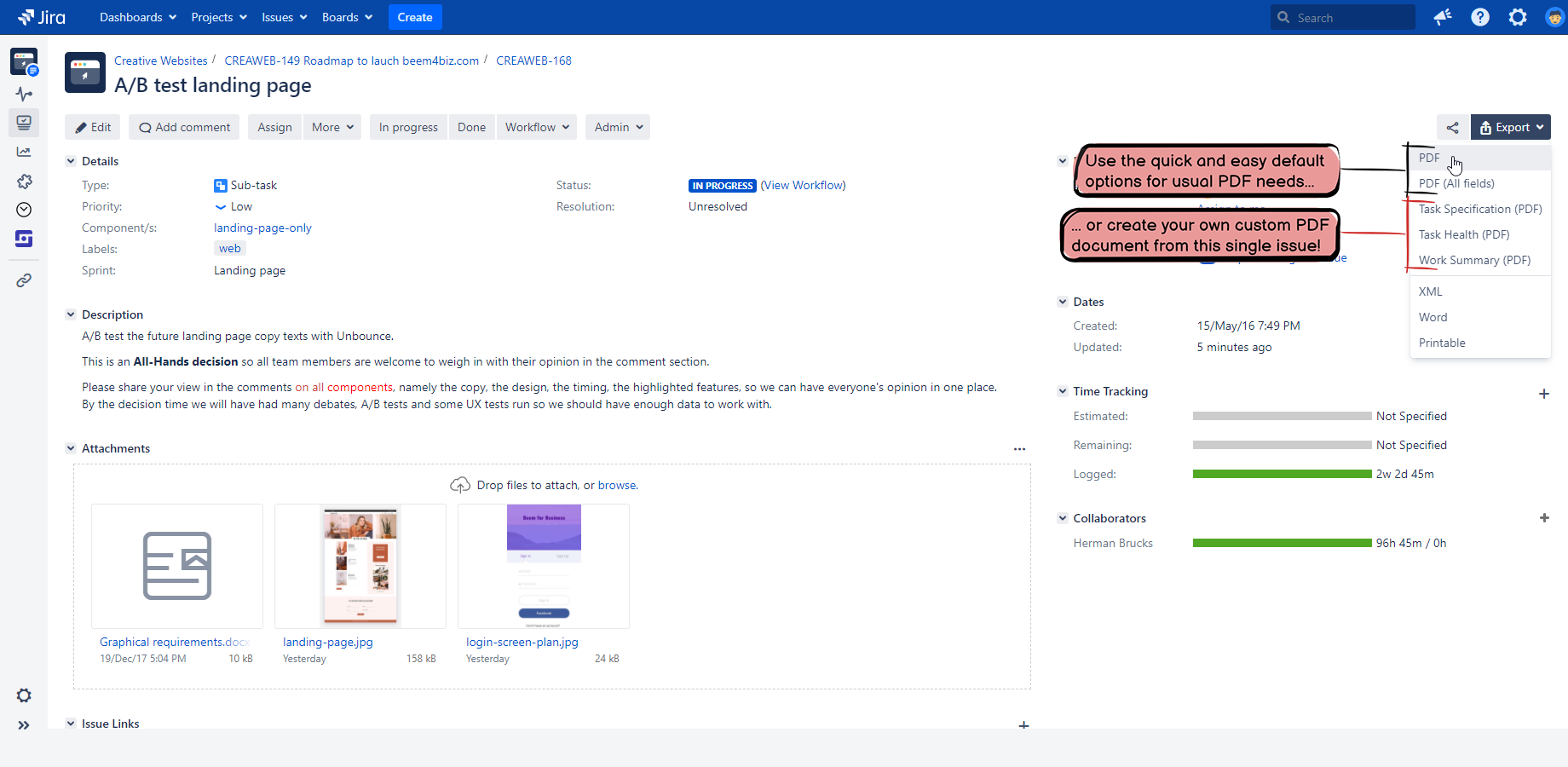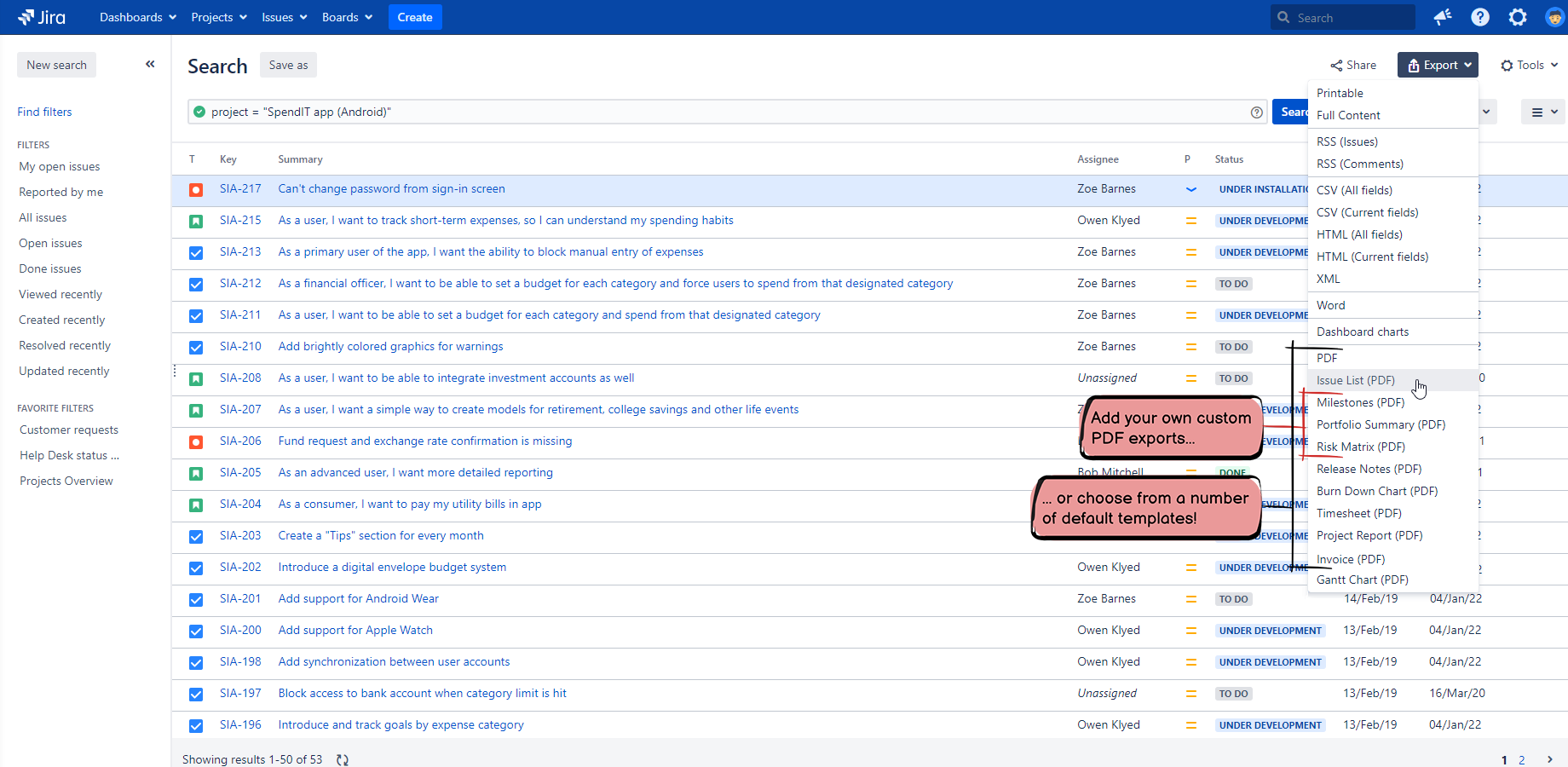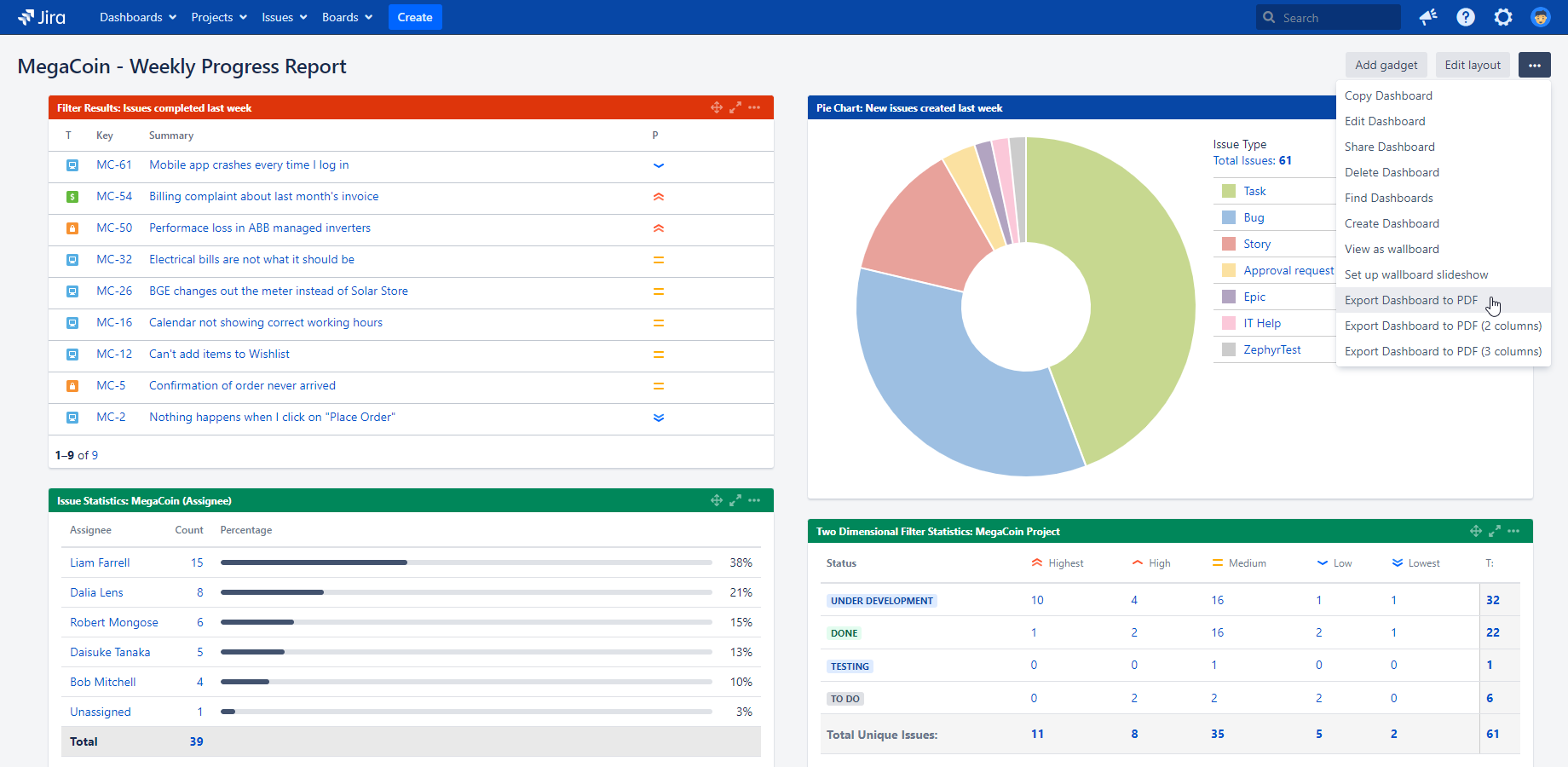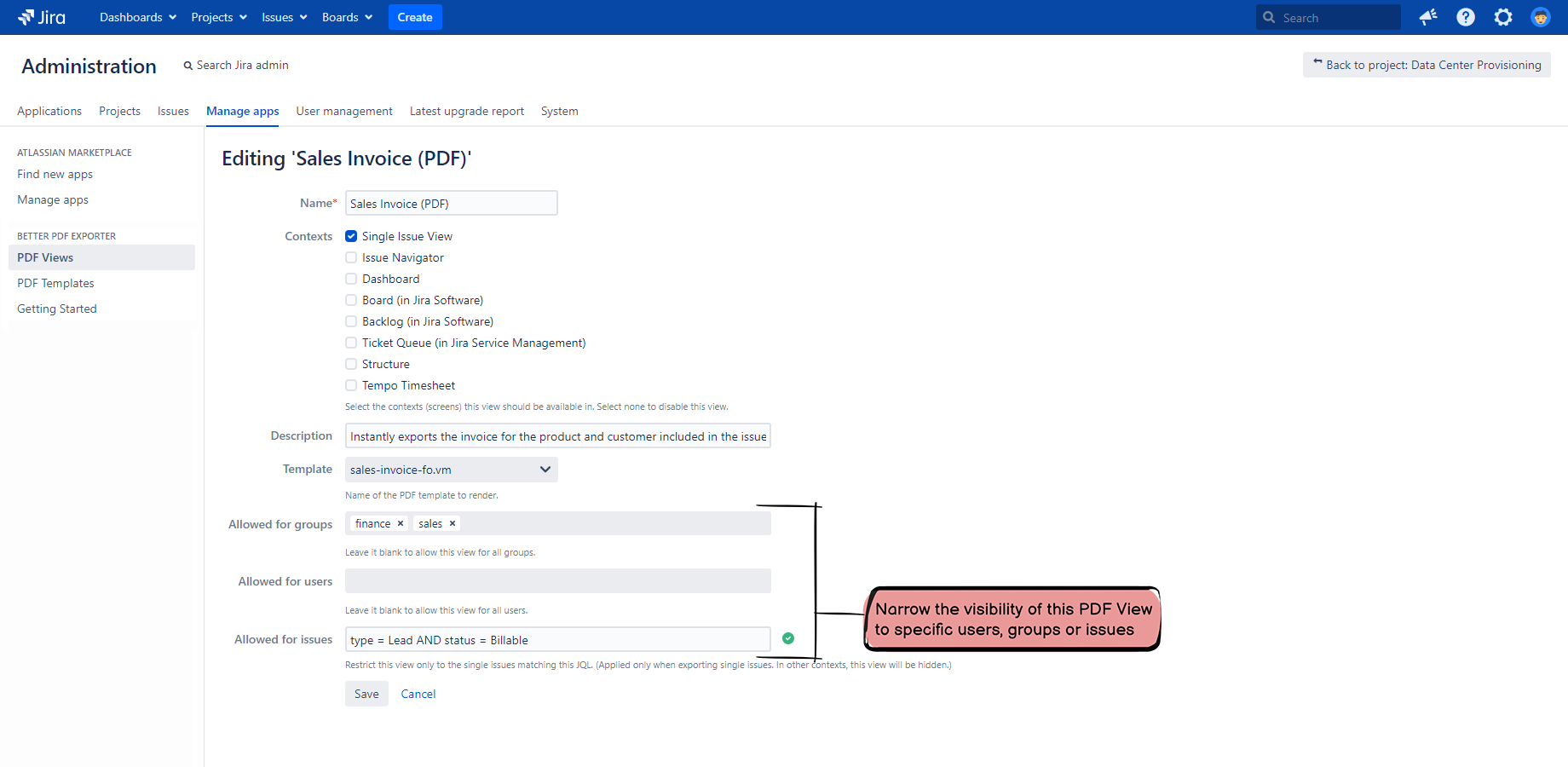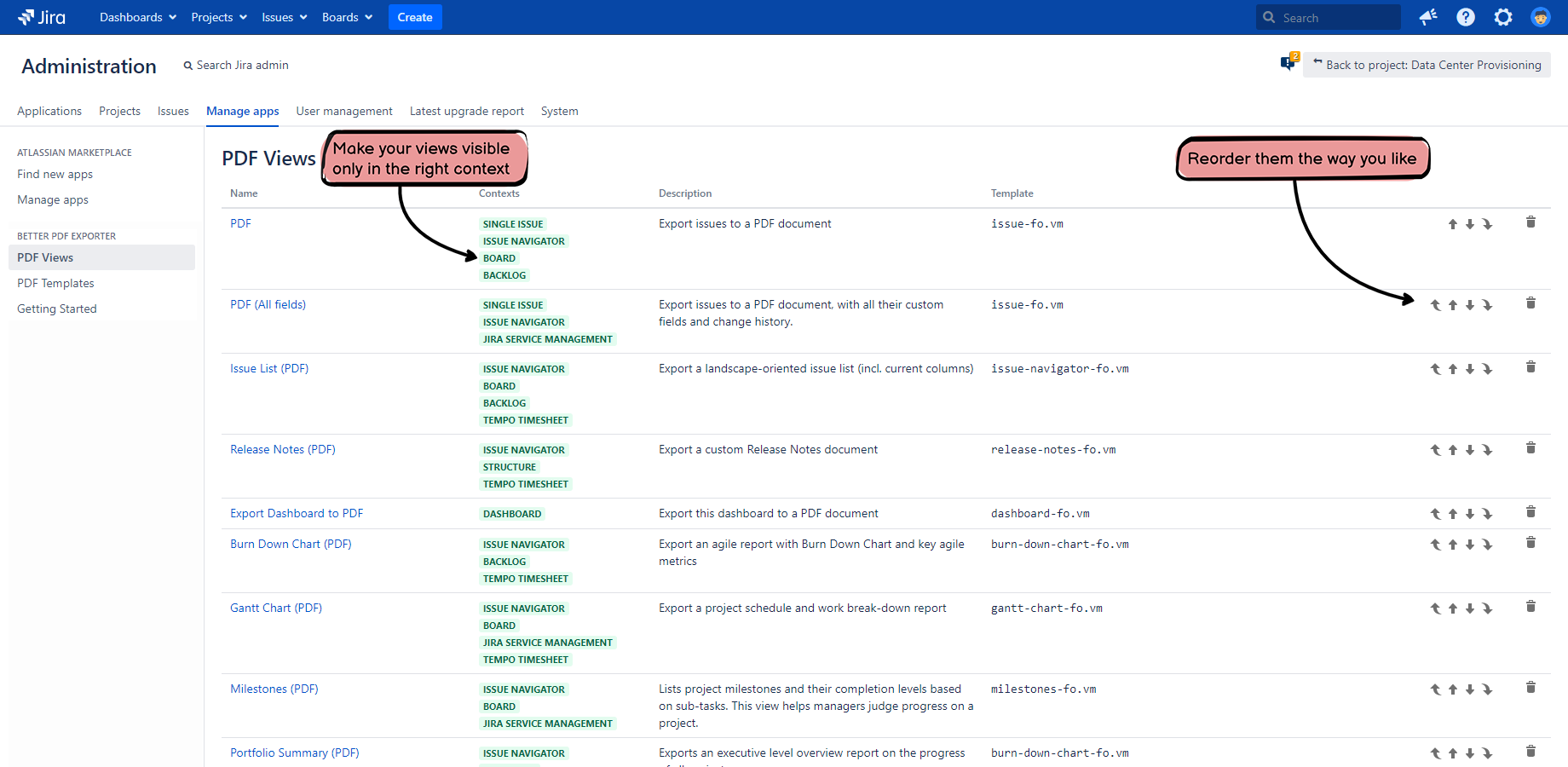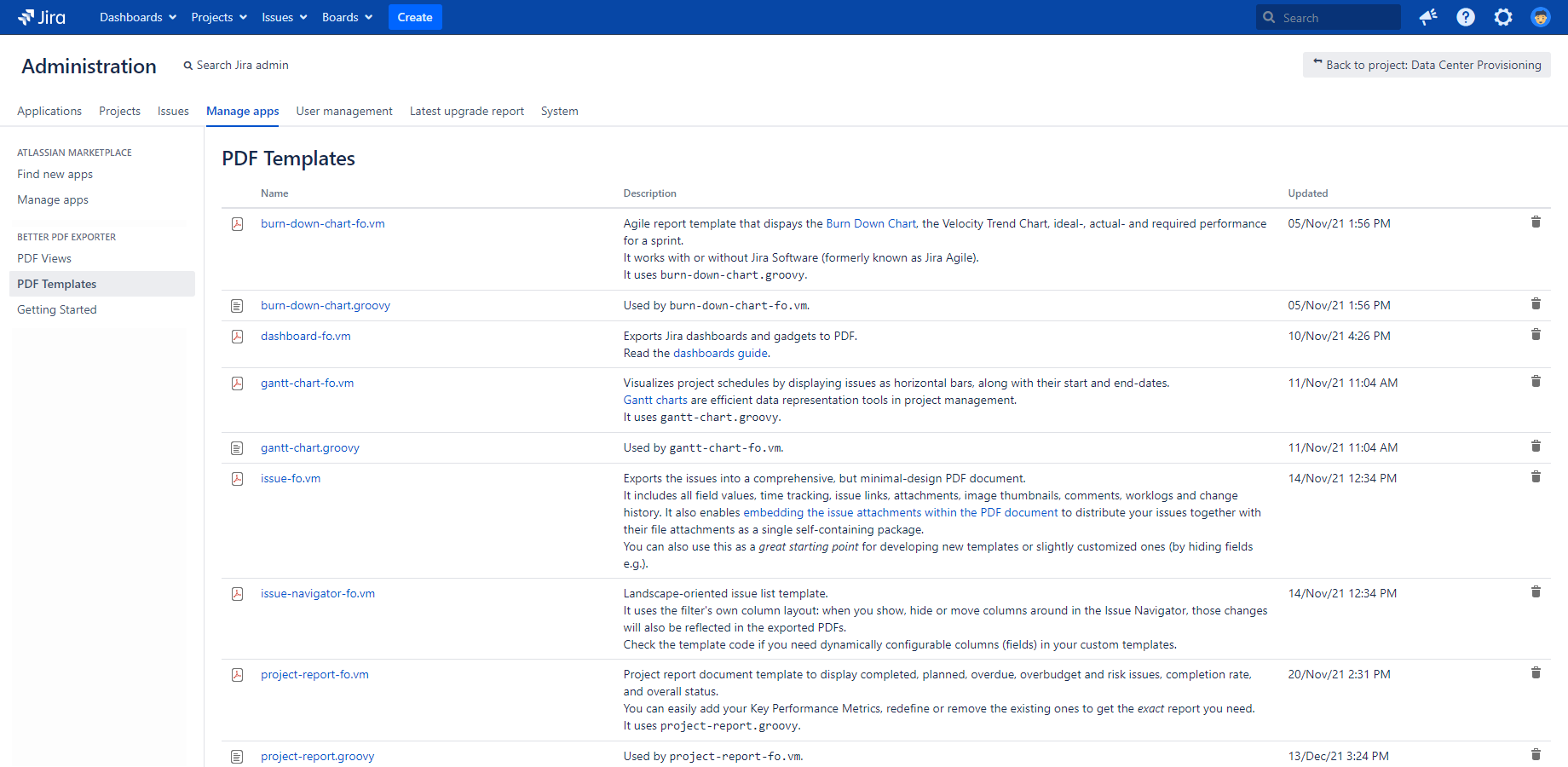In this page
Exporting a single issue to PDF
Exporting the issues from the Issue Navigator to PDF
Exporting a dashboard to PDF
Managing PDF export types
Managing PDF views
Restoring the default PDF views
Managing PDF templates
Restoring the default resources (PDF templates and Groovy scripts)
Next step
Exporting Jira issues to PDF
From users' point of view, the Better PDF Exporter for Jira Data Center app is very simple to use.
All you have to do is clicking certain items in the Export drop-down menu to get your PDF documents. Those can either be generated:
- from a single issue
- from the issues in the Issue Navigator (saved filters, JQL queries, searches, versions, sprints and all other Jira features that are based on the JQL query language)
- from the issues in a Jira Software board (columns)
- from the issues in a Jira Software backlog (sprints)
- from the issues in a Jira Service Management queue
- from the issues in a Tempo timesheet
After the PDF document is downloaded to your computer, open the file in any compatible viewer. Our primary recommendation is Adobe Reader.
Exporting a single issue to PDF
Click one of the items in the Export drop-down menu in the Issue Details screen to get your PDF document.
Please note that there are multiple items available in the Export drop-down menu, because the app allows using any number of templates to generate PDF documents. You can, for instance, use one template to generate a timesheet based invoice from your issues and another to generate custom release notes.
Exporting the issues from the Issue Navigator to PDF
Similarly to the previous, click one of the items in the Export drop-down menu in the Issue Navigator screen. There can be multiple PDF export options available there, as written in the previous section.
Exporting a dashboard to PDF
For dashboard exports, open the "..." menu and click one of the items in the drop-down menu. As you see, there are multiple layout options available.
For more details on exporting dashboards, see the dedicated Dashboards page.
Managing PDF export types
The app enables using any number of so-called views (export types), each relying on a different PDF template and different template logic. You can use one view to generate task lists, another to generate timesheets, and a third one to generate release notes documents, for example.
Each view:
- has its name, which appears in the Export drop-down menu.
- has a short description, to explain the purpose of this export type.
- can appear in any combination of these contexts (screens): Single Issue View, Issue Navigator, Dashboard, Jira Software Board, Jira Software Backlog, Jira Service Management Queue and Tempo Timesheet.
- renders one particular PDF template file. (Template files can be reused by multiple export types. For example, a Product Foo Release Notes and a Product Bar Release Notes can render the same PDF template, with some differences in the template logic.")
- can be optionally restricted to certain groups, users or issues (specified by JQL).
Views are ordered. Their order can be defined right in the PDF Views list. The same order will also be reflected in the Export drop-down menu, allowing the administrators to define a logical order for the items.
As written above, views render their output from PDF templates. All templates can be edited directly in a web based editor, by clicking on the name of a template in PDF Templates list.
Each PDF template:
- has its name (filename).
- has a short description.
- is stored in the Jira database. (Administrators can edit these files any time.)
Managing PDF views
Go to Jira Administration → Add-ons → PDF Views.
You can easily create, edit, delete or reorder export types (views) in this screen. Please note that you can use the "edit" function also to rename or hide views.
Restoring the default PDF views
In the following exceptional cases, you may want to restore the default views:
- You broke or deleted some views, or created new ones that are not needed any longer, and now want to start over from a clear state (i.e. the factory-default settings).
- You never customized the views, and instead of rigorously performing the upgrade steps at app version updates (documented in the Version History), you want to take a shorter path. Restoring guarantees that you will get the views that are 100% consistent with your current app version. Not more, not less.
Use this feature carefully, as there is no undo. At the same time, if something went wrong: views are saved to the regular Jira back-ups, so it gives you safety.
You can reset the default views by opening this URL in your browser:
http://localhost:8086/secure/reset-pdf-views.jspa?santa
Just replace the localhost:8086 part to match your Jira base URL. Note: santa is a request parameter that reduces the risk of accidentally calling this URL. (Fun fact: we developed this feature on 6 Dec some years ago.)
After the successful restore, you will be redirected to the list of the PDF views.
Managing PDF templates
The final PDF documents are rendered from template files, optionally running Groovy scripts. These files, used by the rendering process, are together called "resources".
Go to Jira Administration → Add-ons → PDF Templates to manage resources.
You can easily create or edit PDF templates and Groovy scripts in this screen, using the web based code editor. To edit a resource, just click on its name, make the necessary modifications and save your work.
Restoring the default resources (PDF templates and Groovy scripts)
Similarly to restoring the default views, you can also restore the default resources. The same applies: use it in exceptional situations and use it carefully.
You can reset the resources by opening this URL in your browser:
http://localhost:8086/secure/reset-pdf-resources.jspa?santa
Just replace the localhost:8086 part to match your Jira base URL.
After the successful restore, you will be redirected to the list of the PDF resources.
Next step
Next step: customizing your Jira PDF templates.
Questions?
Ask us any time.


